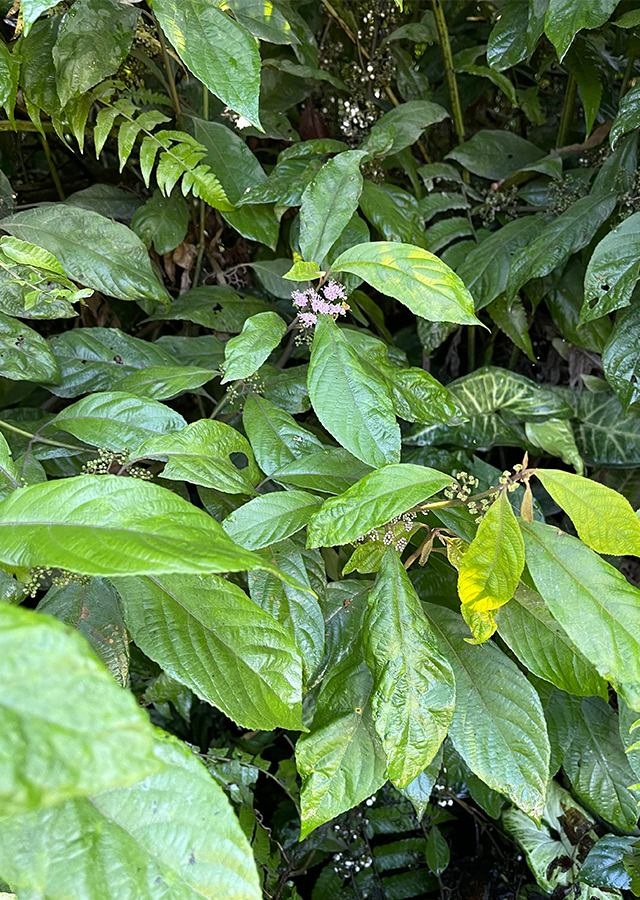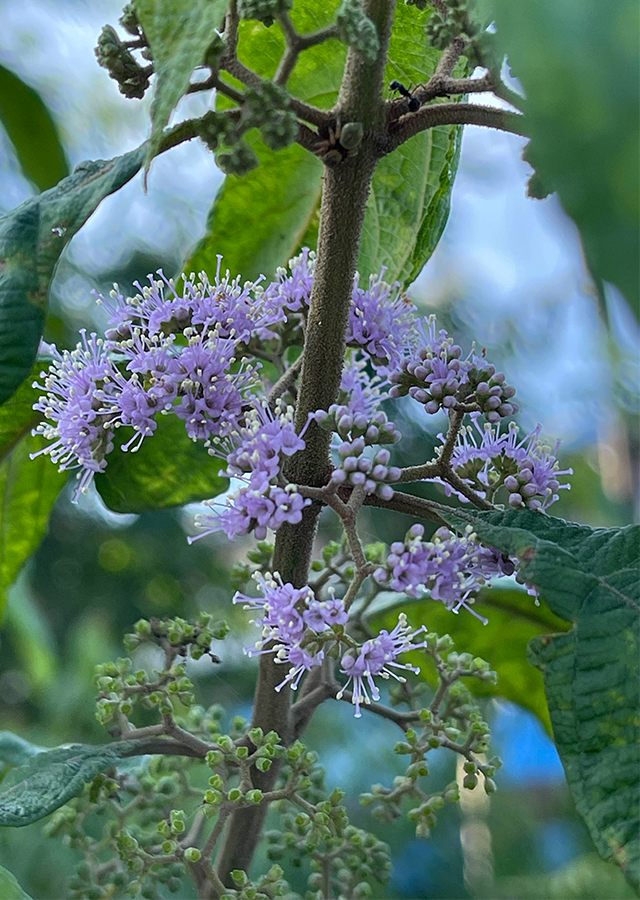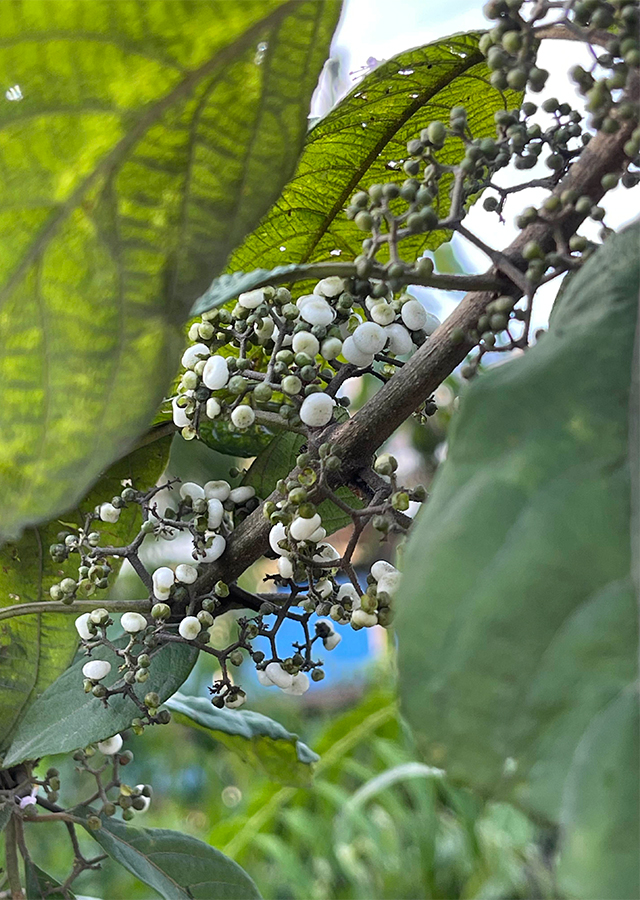Long Leaved Beauty Berry
Callicarpa longifolia Lam.
Lamiaceae
Location in our garden
Green House



Synonym
Callicarpa albida Blume
Callicarpa attenuata Wall. ex Walp.
Callicarpa blumei Zoll. & Moritzi
Habitus
Shrubs. An evergreen shrub or small tree, growing up to 6 m tall, though usually much smaller
Part Used
Leaves
Roots
Growing Requirements
Full Sunshine
Habitat
Forest
Roadside
Terrestrial
Overview
Its native distributions are Southern China, Southern Thailand through Malaysia, Singapore, the Philippines, Brunei, Indonesia to Papua New Guinea, and Australia. The plant is harvested from the wild for its use locally in traditional medicine. It is grown as an ornamental in gardens, valued especially for its colourful berries.
Vernacular Names
Tampang besi (Malay), Topapimanua (Papua New Guinea), Tử châu lá dài (Vietnamese).
Agroecology
Found in brushwood, thickets, village groves and secondary forest from sea-level up to 1,700 m, secondary regrowth and open sites in mixed dipterocarp forests, often along rivers and streams and hillsides with poor sandy soils. Prefers a highly fertile, well-drained soil in full sun or dappled sunlight.
Morphology
- Stems - branches densely stellate hair.
- Leaves - elliptical-oblong, lanceolate or oblong, 7-18 cm × 2.5-6.5 cm, base cuneate, apex with a long point, margin serrate, glandular and tomentose beneath, often slightly brownish-rusty, almost glabrous or sprinkled with very short hairs above, petiole 0.7-2(-2.5) cm long, stellate hairy; cyme densely stellate hairy, glabrescent, primary peduncle shorter than the petiole, 0.3-1.3(-1.7) cm long.
- Flowers - subsessile, calyx minutely 4-toothed, 1-1.5 mm long, densely glandular and floccose outside, corolla white, tube 1.5 mm long, lobes broadly ovate, 0.5-1 mm long, with a few glands, pubescent, stamens exserted, ovary globose, with a few hairs at the top, glandular all over, style exserted, 4-6 mm long; drupe globular, 1.5-3 mm in diameter, almost succulent, with a few hairs at the top, glandular, white.
- Fruits - fleshy fruits (2-6 mm long, 2-6 mm wide) are covered in minute hairs and yellow glands, ripening to white or cream-colour. Each fruit contains 1-4 seeds.
Cultivation
- Propagated by seeds - sow in a nursery seedbed and only just cover the seed. Germination usually takes place within 1 - 3 months at 18 °C. When large enough to handle, prick the seedlings out into individual pots and grow them on until large enough to plant out.
- By cuttings of half-ripe wood 10 cm long in a frame. High percentage.
- By cuttings of mature wood of the current season's growth with a heel.
Chemical Constituents
Flavonoids, tannins, saponins, and terpenoids.
Traditional Medicinal Uses
- A decoction of the leaves is drunk in the treatment of colic, fever, malaria and diarrhoea. It is also given to mothers after parturition.
- The leaves are widely used for poulticing swellings, bruises and wounds; for rubbing over the body in fever; and are also applied to an ulcerated mouth.
- Pounded leaves are an ingredient for a poultice to mature boils and ulcers.
- An infusion of the roots is mentioned as a remedy for syphilis.
- A decoction of the roots is mentioned as a cure for diarrhoea and colic.
- Various parts, prepared in different ways, are prescribed as a remedy for sprue.
Part Used
Reference Sources
- Fern, Ken. Useful Tropical Plants. (2021). Callicarpa longifolia. https://tropical.theferns.info/viewtropical.php?id=Callicarpa+longifolia. 01-09-21.
- Prosea. Plant Resources of South East Asia. Callicarpa longifolia. https://uses.plantnet-project.org/en/Callicarpa_longifolia_(PROSEA). 01-09-21.
- National Parks. Flora & Fauna Web. Callicarpa longifolia. https://www.nparks.gov.sg/florafaunaweb/flora/5/5/5575. 01-09-21.

